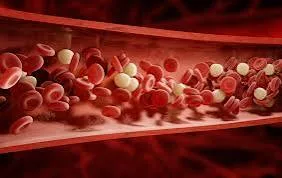Blood is essential for life, transporting oxygen, nutrients, and immune cells throughout the body. However, various diseases can affect blood components—red blood cells, white blood cells, platelets, and plasma—leading to serious health conditions. In this article, we explore common blood disorders, their causes, symptoms, and treatment options.
1. Anemia
Anemia is a condition characterized by a deficiency of red blood cells (RBCs) or hemoglobin, leading to reduced oxygen supply to the body’s tissues.
Causes:
- Iron deficiency (Iron-deficiency anemia)
- Vitamin B12 or folate deficiency (Megaloblastic anemia)
- Chronic diseases (Chronic disease anemia)
- Genetic disorders (Sickle cell anemia, Thalassemia)
Symptoms:
- Fatigue and weakness
- Pale or yellowish skin
- Shortness of breath
- Dizziness or lightheadedness
Treatment:
Treatment depends on the cause and may include iron or vitamin supplements, dietary changes, or in severe cases, blood transfusions. Genetic anemias like sickle cell disease require specialized care, including pain management and bone marrow transplants.
2. Leukemia
Leukemia is a type of blood cancer affecting white blood cells, causing abnormal cell production in the bone marrow.
Causes:
- Genetic mutations
- Radiation exposure
- Certain chemicals and chemotherapy drugs
Symptoms:
- Frequent infections
- Unexplained weight loss
- Easy bruising or bleeding
- Fatigue and fever
Treatment:
Leukemia is treated with chemotherapy, radiation therapy, targeted drugs, and bone marrow transplants.
3. Hemophilia
Hemophilia is a genetic disorder where the blood lacks sufficient clotting factors, leading to excessive bleeding.
Causes:
- Inherited genetic mutations affecting clotting factors (Hemophilia A and B)
Symptoms:
- Prolonged bleeding from cuts or injuries
- Unexplained internal bleeding
- Joint pain and swelling due to bleeding into joints
Treatment:
Treatment includes clotting factor replacement therapy and medications to promote clotting.
4. Thrombocytopenia
Thrombocytopenia is a condition where the blood has an abnormally low platelet count, leading to bleeding problems.
Causes:
- Autoimmune diseases (immune thrombocytopenia, or ITP)
- Viral infections
- Certain medications
- Bone marrow disorders
Symptoms:
- Easy bruising
- Prolonged bleeding
- Red or purple spots on the skin (petechiae)
Treatment:
Mild cases may not require treatment, while severe cases may need corticosteroids, platelet transfusions, or immune system-modulating drugs.
5. Sickle Cell Disease
Sickle cell disease is a hereditary disorder where RBCs become misshapen, leading to blockages in blood vessels and reduced oxygen delivery.
Causes:
- Genetic mutation affecting hemoglobin production
Symptoms:
- Severe pain (sickle cell crisis)
- Swelling in hands and feet
- Frequent infections
- Organ damage
Treatment:
Pain management, blood transfusions, and bone marrow transplants are common treatments.
Conclusion
Blood disorders can range from mild to life-threatening, affecting oxygen transport, clotting, and immune function. While some conditions are manageable with lifestyle changes and medications, others may require more aggressive treatments. Early diagnosis and medical intervention play a crucial role in managing these diseases effectively. If you experience symptoms related to blood disorders, seek medical attention promptly.
